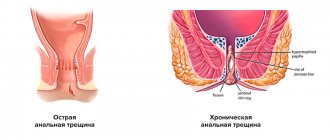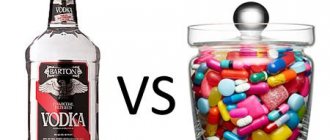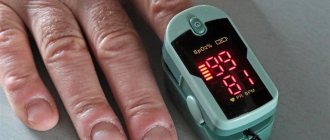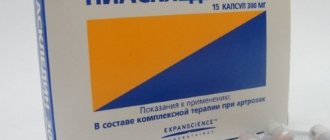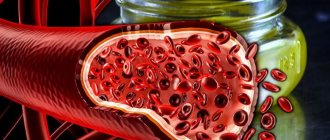- Outpatient department
Outpatient department » - Gastroenterology
Gastroenterology »
- About the direction
About the direction »
- Gastritis: symptoms, diagnosis and treatment
Gastritis is perhaps the most common disease of the gastrointestinal tract. Almost every second resident of our country suffers from it. That is why it is so important to know the first signs and symptoms of this disease in order to start treatment on time and not neglect your health.
Gastritis (from the Latin gastritis, from the ancient Greek γαστήρ (gaster) - “stomach” + -itis inflammatory or inflammatory-dystrophic changes in the mucous membrane) is a collective concept that is used to refer to various inflammatory and dystrophic changes in the gastric mucosa. Damage to the mucous membrane can be primary, considered as an independent disease, caused by poor nutrition, and secondary, caused by other infectious and non-infectious diseases or intoxication.
Types of gastritis
Acute gastritis
In modern medicine, there are several types of acute gastritis:
Simple (catarrhal) gastritis develops as a result of ingestion of stale food contaminated with pathogenic microbes (foodborne toxic infection), rotavirosis, allergies, or as a result of damage to the gastric mucosa by medications. With catarrhal gastritis, the surface layer of the mucous membrane is destroyed, which is quickly restored after the cessation of the irritating factor.
Corrosive (erosive) gastritis. This type of gastritis develops after concentrated acids or alkalis enter the stomach, which corrode the gastric mucosa. In this case, not only the superficial, but also the deep layers of the gastric mucosa are destroyed, so this form of the disease often gives rise to peptic ulcers or the formation of scars.
Phlegmonous gastritis is a purulent inflammation of the stomach that can develop as a result of penetration of a foreign object (for example, a fish bone) into the stomach wall with subsequent infection of this area. A distinctive feature of this type of gastritis is high fever and unbearable pain in the epigastric region. Phlegmonous gastritis requires immediate surgical intervention, as it can develop into peritonitis (extensive inflammation of the abdominal organs) and be fatal.
Fibrinous gastritis. It occurs very rarely against the background of sepsis (blood poisoning).
With proper treatment, acute gastritis (depending on the form) lasts up to 5 - 7 days, but complete recovery of the stomach occurs much later.
Often acute gastritis can become chronic.
Chronic gastritis
Chronic gastritis can develop as a consequence of acute gastritis or as an independent disease. Its danger lies in the fact that it can occur for a long time without showing any symptoms.
In the development of the disease, as a rule, there are periods of exacerbation and remission. During periods of exacerbation of chronic gastritis, short-term attacks of pain, discomfort in the upper abdomen, a feeling of heaviness, nausea after eating, and heartburn may appear, which indicates a dysfunction of the natural “valves” of the stomach and the reflux of acidic stomach contents into the esophagus.
A characteristic feature of chronic gastritis is the gradual growth of connective tissue in the gastric mucosa, replacing the cells that produce gastric juice (atrophy of the gastric mucosa). Chronic gastritis is often accompanied by a decrease in the production of gastric juice and acid (hypoacid gastritis).
Helicobacter pylori infection, which parasitizes the stomach, disrupts the renewal processes of the mucous membrane; thus, when old cells die, new ones cannot be formed. This leads to gradual degradation of the gastric mucosa with loss of function of the glands that produce gastric juice.
For acute gastritis
During the period of exacerbation of gastritis, doctors prescribe a special diet that is as gentle as possible on
the irritated gastric mucosa. The diet consists of liquid, pureed and non-spicy foods. As you feel better, the diet gradually expands and becomes similar to the diet of a completely healthy person - minus indigestible fatty meats and fish, smoked meats, hot, salty and overly spicy dishes. But nutritionists do not recommend abusing these products even for people with a still healthy stomach - in order to avoid digestive disorders.
Causes of gastritis
The main causes of gastritis are:
- poor nutrition;
- hasty eating and poorly chewed food or dry food;
- eating food that is too hot or too cold;
- eating savory foods (mostly spicy and highly salted);
- smoking;
- alcohol consumption;
- stress;
- infection with the microbe Helicobacter pylori;
- chewing gum on an empty stomach.
Hypoacid gastritis: treatment
The treatment of such gastritis is based on an integrated approach using various methods and medications acting in different directions.
- To return the functioning of the digestive system to normal, replacement therapy is used (preparations of natural gastric juice, hydrochloric acid, enzymes).
- Antispasmodics are used to relieve pain.
- If, based on research results, Helicobacter pylori was detected in the body, then antibiotics are prescribed.
- Impaired metabolism during gastritis leads to a lack of nutrients, so vitamin complexes containing B vitamins and folic acid are prescribed.
- Probiotics are used to restore intestinal flora.
Medicines for hypoacid gastritis should be used strictly as prescribed by the doctor, since deviation from the regimen may disrupt the course of treatment. An important factor during treatment is diet. In this case, the patient is assigned to table No. 2, where rough and indigestible food, very hot and cold dishes are excluded from the diet. In addition, if the secretion of hydrochloric acid decreases, milk consumption should be reduced, replacing it with fermented milk products. Portions should be small, but 6 times a day. As an auxiliary treatment, traditional medicine is possible, which is also best agreed upon with the treating specialist. The most commonly used are decoctions of rose hips, blueberries, and mixtures of aloe and honey.
Symptoms of gastritis
So, how can you recognize that you have begun to develop gastritis? It is worth listening to your body and analyzing why pain bothers you, at what time it occurs and how often it happens.
Symptoms of gastritis:
- abdominal pain: sharp paroxysmal or constant painful;
- nausea is constant or intermittent, often occurring immediately after eating;
- heartburn;
- belching with a sour smell;
- repeated vomiting (in the case of acute gastritis, vomiting with blood is possible, since internal bleeding may open in the stomach);
- increased salivation;
- sometimes dry mouth;
- bowel dysfunction: constipation or diarrhea;
- from the whole body: severe general weakness, dizziness, headache, sweating, increased temperature, decreased blood pressure, increased heart rate - tachycardia;
- decreased appetite;
- unpleasant taste in the mouth;
- feeling of heaviness in the stomach after eating;
- bloating, rumbling in the stomach, flatulence;
- anemia, brittle and dry hair, split nails.
Symptoms and signs of the disease
The symptoms of such gastritis are associated with the severity of the disease. At the very beginning, they may not be noticeable at all. But later complaints with hypoacid gastritis are as follows:
- pain in the upper abdomen (sometimes radiating under the ribs on the left side);
- feeling of discomfort (feeling of heaviness, bloating);
- belching “rotten eggs”, metallic taste in the mouth, tongue with a gray coating;
- poor appetite;
- frequent diarrhea or constipation;
- nausea, excessive salivation;
- chronic fatigue, headaches, low performance;
- weight loss, changes in sleep patterns.
During a severe exacerbation, other signs may be added: rapid heartbeat, fainting.
Diagnosis of gastritis
Today, the main way to determine gastritis is fibrogastroduodenoendoscopy or FGDS, which consists of studying the condition of the inner surface of the stomach using a probe, as well as a biopsy - removing a small fragment of tissue for examination.
FGDS makes it possible not to confuse gastritis and ulcer and to determine the type of disease: erosive or non-erosive.
Also, a gastroenterologist, to make a correct diagnosis, may prescribe the following tests:
- General blood analysis.
- Fecal occult blood test.
- Histological examination of a biopsy specimen of the gastric mucosa.
- Cytological examination of a biopsy specimen of the gastric mucosa.
- Two tests for the determination of H. pylori.
- Blood chemistry.
- General urine analysis.
Causes of hypoacid gastritis
The reasons due to which this disease appears can be external and internal.
External ones include:
- abuse of tobacco products and alcoholic beverages;
- improper diet, spicy, fried, fatty, smoked foods;
- abuse of medications with side effects on the gastric mucosa;
- harmful effects of chemicals and radioactive substances;
Internal include:
- gastrointestinal pathologies and disorders of the immune system;
- impaired metabolism, liver, pancreas and thyroid glands;
- various genetic abnormalities in the development of the mucous membrane.
Hypoacid gastritis most often affects adults and males. Children and women are less susceptible to this disease.
Diet for gastritis
For gastritis with low acidity
Can:
- boiled lean meat: chicken, rabbit;
- meat broths;
- lean fish: pink salmon, hake, cod;
- vegetables in the form of puree or grated: carrots, potatoes, green peas, beets;
- ground fruits, compotes and jelly from apples, raspberries and strawberries;
- porridge (oatmeal, semolina, rice);
- low-fat cottage cheese, milk;
- only squeezed cabbage juice;
- alkaline mineral waters, for example Borjomi (1 glass an hour before meals).
It is forbidden:
- hot and spicy dishes;
- canned food;
- mustard;
- pepper;
- onion;
- hot sauces.
For gastritis with high acidity
Can:
- pureed vegetarian soups;
- dairy products;
- lean fish and boiled meat;
- scrambled eggs;
- porridge, jelly, jelly;
- vegetable purees;
- compotes from fresh (not sour) fruits;
- carrot juice;
- White bread.
It is forbidden:
- coffee and strong tea;
- meat broths;
- smoked meats;
- mustard;
- onion;
- garlic.
For all types of gastritis, split meals are very important - 5-6 times a day.
Gastritis (from the Latin gastritis, from the ancient Greek γαστήρ (gaster) - “stomach” + -itis inflammatory or inflammatory-dystrophic changes in the mucous membrane) is a collective concept used to refer to inflammatory and dystrophic changes in the gastric mucosa of different origins and course. Damage to the mucous membrane can be primary, considered as an independent disease (due to poor nutrition), and secondary, caused by other infectious and non-infectious diseases or intoxication.
Gastritis is perhaps the most common disease of the gastrointestinal tract. Almost every second resident of our country suffers from it.
If you are really looking for your doctor...
What to remember
Nutrition for chronic gastritis should be complete.
However, it is selected so as not to irritate the gastric mucosa physically and mechanically. When the condition of the digestive organs improves, you can begin to eat almost as before the disease, but excluding fatty and spicy foods and taking additional vitamin complexes. Tags:
- Diets
- Diet
- Stomach
1 comment • To leave a comment you must be an authorized user
- Larisa46966 Thanks for the article! Regarding tea, the truth has been written very briefly. Gastritis is an unpleasant disease ((think 10 times before you drink or eat something. I suggest you read the article - https://medvisor.ru/articles/gastroenterologiya/chai-pri-gastrite/ about the effect of tea on the stomach with gastritis. All -I still want tea every day...Very useful information, understandable)
Gastritis or functional dyspepsia?
The term “gastritis” is usually used to refer to various inflammatory and degenerative changes in the gastric mucosa. But in fact, the disease itself is quite rare and can only be diagnosed using a biopsy during a gastroscopy procedure.
Often what is called gastritis is functional dyspepsia (a set of disorders of the digestive system). The term “gastritis” is also mistakenly used to mean gastroesophageal reflux disease (GERD) or irritable bowel syndrome (IBS).
Currently, the diagnosis of “gastritis” is usually made in the presence of morphological signs discovered after undergoing a series of medical examinations, in particular, after laboratory identification of the main causative agent of the disease - the bacterium Helicobacter pylori (H. Pilory), histological studies and FGDS.
Why does gastritis occur?
The causes of the disease are autoimmune disorders, gastric acidity disorders and contamination of the digestive tract by Helicobacter pylori. Predisposing factors that provoke the development of the disease are also identified:
- Irrational and unbalanced diet, abuse of spicy, fried and fatty foods.
- Uncontrolled use of medications that have a negative effect on the gastric mucosa (antibiotics, NSAIDs, corticosteroids).
- Regular stressful situations.
- Endocrine disorders.
- Bad habits (excessive consumption of alcoholic beverages and smoking).
- Accidental ingestion of chemical compounds.
- Concomitant pathology of the pancreas, liver and gallbladder.
Types of disease
Depending on the location and accompanying symptoms, gastritis can be of the following types:
- Atrophic gastritis with low acidity. Thinning of the mucous membrane is observed, tissues die and lose their protective function. It is divided into antral and diffuse. A severe decrease in the level of acid in the stomach is the most dangerous condition, as it can provoke cancer. The exact cause of its development has not yet been established, but overeating, poor diet, and taking hormonal medications and antibiotics as self-medication play an important role.
- Chronic gastritis of the stomach with low acidity. This disease, in turn, is divided into the stage of compensation, partial compensation and decompensation. The chronic variant develops slowly: initially, acidity increases significantly. If treatment is not started, the acid-producing cells die and little is produced. Acidity returns to normal. With further progression, atrophy (death) of the gastric mucosa begins, and a chronic version of the disease occurs. Chronic gastritis with decreased secretion is often caused by the bacterium H. Pylori.
Treatment
Therapy must be adequate, long-term, and most importantly comprehensive.
Diet
Rational, balanced and gentle nutrition is the basis for the treatment of gastritis in adult patients.
To achieve success, it is important to exclude from the patient’s diet alcoholic beverages, sweets, baked goods, products containing caffeine (cocoa, coffee, strong tea), fatty fish (mackerel, trout, salmon) and meat (goose, lamb, pork), canned food, spices , as well as fresh vegetables and fruits.
The patient's diet is based on fruit compotes, jelly, porridge with water or low-fat milk, dried bread, boiled and pureed vegetables, and weak broths. Meat products allowed include turkey fillet, chicken fillet or lean beef.
Drug therapy
Among the medications used to treat gastritis, the following groups are distinguished:
- H2 receptor blockers (ranitidine).
- Antacids (Phosphalugel, Almagel).
- Proton pump blockers (Omeprazole, Pantoprazole).
- Antibacterial drugs (Clarithromycin, Metronidazole).
To prevent the development of dysbiosis and other undesirable manifestations during treatment, patients are recommended to take a course of digestive enzymes and probiotics.
Part II. Drug treatment of gastritis and gastroduodenitis. Other factors
Part II. Chronic gastritis and gastroduodenitis (end)
V.F. Privorotsky, N.E. Luppova Treatment of gastritis and gastroduodenitis Drug treatment (end)
2. Normalization of the motor function of the upper gastrointestinal tract is carried out with prokinetic drugs, mainly dopamine antagonists. They activate the contraction of the stomach and its transport function, and increase the tone of the LES.
1st generation drugs include metoclopramide (cerucal, raglan), the disadvantage of which is the ability to penetrate the blood-brain barrier and produce undesirable side antidopaminergic effects on the central nervous system in the form of extrapyramidal disorders. This limits the use of metoclopramide in pediatric practice.
Motilium
- second generation drug. Its prokinetic activity is superior to that of metoclopramide, and it does not have the side effects of the latter. Prescribed 0.25 mg/kg body weight 3-4 times a day 15-20 minutes before meals.
3. Increasing the protective properties of the gastric mucosa. The group of drugs that activate the protective properties of coolant includes medicinal substances with different mechanisms of action.
The cytoprotective effect of drugs can be achieved: by increasing the production of protective mucus (liquiriton, licorice root, carbenoxolone, biogastron), by improving the regeneration of the mucous membrane (methacyl, sea buckthorn oil, rose hip oil, solcoseryl, acgovegin, dalargin). Antipeptic drugs have a cytoprotective effect.
Antipeptic drugs. In the pathogenesis of diseases of the stomach and duodenum, in addition to HCl, proteolytic enzymes play an important role. Activation of pepsinogen into pepsin occurs with increased and continuous acid formation, which causes damage to the coolant and mucous membrane of the duodenum. Antipeptic drugs can inhibit the proteolytic effect of gastric enzymes. In addition, these drugs also have a cytoprotective effect. In the acidic environment of the stomach, they form a protective film on the damaged mucous membrane, protecting it from the aggressive effects of acid and pepsin.
De-nol is a cytoprotective drug that, in addition to the listed properties, has the ability to increase blood flow in the gastroduodenal mucosa and increase local endogenous synthesis of PG. As a result, the secretion of mucus and bicarbonate ions increases, which causes a kind of “antisecretory” effect. The drug is widely used in eradication regimens due to its bactericidal properties, which makes it possible to enhance the antibacterial effect of the regimen as a whole. In addition, to date there are no HP strains resistant to de-nol. Prescribed 1/2-1 tablet 4 times (1-2 tablets 2 times) a day 30-40 minutes before meals and at night.
Sucralfate (alsukral, venter). Aluminum, which is part of the drug, ensures its reparative activity and normalizes the processes of evacuation of contents from the stomach. Sucrose sulfate, interacting with the proteins of damaged tissues, forms a protective layer at the site of ulcers and erosion. The antacid effect of the drug is insignificant. Prescribed 1 tablet (0.5-1.0 g) 4 times a day 40-60 minutes before meals and at night.
True cytoprotectors (synthetic analogs of PG) are misoprostol, enprostil, etc. in pediatric practice they are used only in exceptional cases.
4. Helicobacter pylori eradication
We do not consider it advisable to carry out eradication therapy to all patients with HP-positive CGD, regardless of age. The absolute indications for its implementation, in our opinion, are:
1) HP-associated erosive form of gastroduodenitis;
2) CGD with atrophy (subatrophy) of the glands;
3) any endoscopic and morphological variants of CGD in children with a hereditary burden of ulcerative disease and gastric cancer.
Relative indications are:
1) any HP-associated variants of CGD, occurring with severe clinical symptoms and (or) extensive contamination of the gastric mucosa by HP;
2) any HP-associated variants of gastroduodenal pathology in patients who wish to undergo a course of eradication therapy.
The question of the need for eradication therapy in such situations should be decided individually. In all other cases of detection of HP in children, there are, as a rule, no convincing grounds for anti-Helicobacter therapy.
Drugs and regimens for eradication therapy are given in the corresponding section of the BU.
5. Normalization of autonomic homeostasis in children with GDD diseases is carried out according to the principles set out in the corresponding section of GERD.
6. Treatment of concomitant diseases occurs in accordance with the nature of the existing pathology.
Physical therapy treatment is a desirable component of a comprehensive treatment program. It is indicated during any period of the disease. In the acute stage of severe pain, electrophoresis of novocaine, papaverine, and zinc sulfate is prescribed to the epigastric area, including the pyloroduodenal zone.
In the stage of incomplete remission, applications of mud, paraffin, and ozokerite are effective. Considering the importance of the ANS in regulating the activity of the upper gastrointestinal tract, methods for correcting autonomic imbalance are also used, which were already mentioned in the GERD section.
The use of herbal medicine or mineral waters is indicated when the exacerbation subsides or during remission.
For CGD with increased acid-forming function of the stomach, the following herbal preparations are recommended;
1. Celandine (grass) - 10.0 g;
common yarrow (herb) - 30.0 g;
chamomile (flowers) - 25 g;
St. John's wort (herb) - 39 g.
Take 1/3-2/3 cup of decoction 3 times a day 30 minutes before meals.
2. Common fennel (fruit) - 30.0 g; .
chamomile (flowers) - 30.0 g;
cordate linden (flowers) - 40.0 g.
Take 1/3-2/3 cup of infusion 3 times a day 30 minutes before meals.
It is also possible to use herbal mixtures proposed in the GERD section.
For balneological treatment, waters of low and medium mineralization with a predominance of hydrocarbonate ions are usually used - “Borjomi”, “Luzhanskaya”, “Smirnovskaya”, “Essentuki 4”, “Essentuki 17”, etc.
To reduce the increased secretory function of the stomach, mineral water is prescribed at the rate of 3-5 ml/(kg/day) 1.5-2 hours before meals.
If necessary, stimulate the secretory function of the stomach, mineral water is taken in the same amount 20-30 minutes before meals.
A desirable attribute of the rehabilitation program for children with acid-related diseases is sanatorium-resort treatment (see section GERD).
Clinical examination
The issues of medical examination of patients with CG and CGD in pediatric practice have not yet been fully worked out. Previous recommendations require revision to take into account modern requirements.
The frequency of examinations of the child by a local pediatrician and (or) gastroenterologist is determined by clinical and endoscopic data and should be at least 2 times a year.
The need for FEGDS is determined individually, based on clinical and anamnestic data, the results of previous endoscopic studies and the duration of clinical remission.
The secretory function of the stomach is constitutionally determined, and acidity levels in most children have fairly stable values, which makes it possible to avoid the appointment of pH measurements more than once every 2-3 years.
The ideology of anti-relapse therapy is also being revised. The prescription of antacids, antisecretory drugs, prokinetics, etc. during the period of stable clinical and morphological remission is, as a rule, not indicated. Prophylactic administration of these drugs does not guarantee a relapse-free course of the disease. It should be remembered that the prescription of antacids and cytoprotectors is mandatory while taking ulcerogenic drugs.
Autumn-spring courses of herbal and vitamin therapy and balneotherapy can be considered as anti-relapse therapy.
In cases where CGD occurs with frequent relapses, the above therapy should be enhanced by antacids with reparative properties.
The issue of deregistration can be resolved only if a stable three-year clinical and morphological remission is achieved.
Clinical examples
Sasha S., 14 years old, was admitted with complaints of intense, aching-stabbing pain in the abdomen (epigastric region, around the navel), of average duration (up to 1.5-2 hours), usually before meals or after 1.5-2 hours after meals, sometimes in the morning before breakfast. In the latter case, eating partially relieved the pain syndrome. The pain intensified after eating sour, spicy and fried foods (over the past 2 months the boy was on a diet with partial elimination of them). To relieve pain, I sometimes used antispasmodics and antacids (with a short-term effect).
Dyspeptic complaints: periodically there is belching, heartburn (according to the child, when overeating in the evening), a feeling of rapid satiety, a tendency to constipation.
The complex of “general” complaints is represented by severe asthenic syndrome.
From the anamnesis it is known that the boy has been ill for 3 years and has not been previously examined or treated. Among the factors that trigger an exacerbation, he names errors in diet and violation of the diet, as well as physical activity (practices martial arts). The frequency of exacerbations is 2-3 times a year, seasonality is not clearly visible, but in the summer the child’s well-being improves significantly.
Heredity is burdened by CGD (paternal grandfather) and DU (mother and maternal aunt).
Early history was unremarkable. I was not sick until I was 3 years old. Past diseases: ARVI (1-2 times a year), acute bronchitis, follicular tonsillitis, traumatic hemarthrosis of the right knee joint, rubella, chicken pox. There is no allergic history.
An objective examination showed that the child’s condition was satisfactory. The boy has a correct physique, satisfactory nutrition, and developed muscles of the upper shoulder girdle. The skin and visible mucous membranes are clean. The tongue is covered with a white coating, more at the root. Peripheral lymph nodes are not enlarged. Heart sounds are clear, rhythmic, 62 beats per minute; systolic murmur at the apex of the heart, moderate intensity. Blood pressure 100/b0 mm Hg. Art. Vesicular breathing. The abdomen is soft, accessible to superficial palpation in all parts. With deep palpation, pain is detected in the epigastric region, pyloroduodenal zone, right hypochondrium, Mayo-Robson point. Mendelian and cystic symptoms (Ortner, Kehr, Murphy) are positive. The liver and spleen are not enlarged in size, the sigma is not spasmodic. Stool, according to words, is daily, less often - every other day, formalized, without pathological signs. Urination is not impaired.
As a result of the survey, the following was revealed:
1) hemogram, biochemical blood test, general urine test - without any features;
2) coprogram - muscle fibers without striations (+), fatty acids (+), extracellular starch (++);
3) intragastric pH-metry
- the acid-forming function of the stomach is increased (pH range 1.2 - 1.4) while maintaining the compensatory capabilities of the antrum (pH 6.5-6.8), the rate of acid formation is increased;
4) Ultrasound - signs of biliary dyskinesia (BDSD), reactive state of the pancreatic parenchyma (echo-positive signals in the tail area with an increase in its size);
5) FEGDS - superficial fundal gastritis, erosive antral gastritis (8 “acute” erosions up to 0.3 cm in diameter), superficial bulbitis, cardia insufficiency;
6) help test (++);
7) Ultrasound of the heart - an accessory chord in the left ventricle was detected;
 assessment of the initial autonomic tone - parasympathicotonia.
assessment of the initial autonomic tone - parasympathicotonia.
Based on the totality of the child’s complaints, clinical history, and laboratory and instrumental data, the following diagnoses were made:
Basic diagnosis: chronic gastroduodenitis (superficial fundal gastritis, erosive antrum gastritis, superficial bulbitis), ulcer-like variant, HP (+), with increased acid-forming function, exacerbation phase.
Concomitant diagnosis: biliary dyskinesia of the hypertensive type; reactive pancreatitis with moderate excretory pancreatic insufficiency; minor cardiac anomaly (accessory chord in the left ventricle).
Treatment.
1. Diet - table 1-in.
2. Semi-bed rest.
3. Drug therapy: anti-Helicobacter triple regimen:
- Kvamatel - 20 mg 2 times a day - 2 weeks, then 20 mg - in the evening - 1 week, before meals;
— de-nol — 2 tables. 2 times a day - 2 weeks, before meals;
— flemoxin-solutab — 1 tablet. (500 mg) 2 times a day for 7 days, before or after meals.
When switching to a single dose of quamatela - phosphalugel, 1 sachet 3 times a day - 2 weeks, before meals;
— mezim-forte (3500 IU), 1 table. 3 times a day - 2 weeks, before meals;
- galstena 10 drops. 3 times a day - 4 weeks, after meals.
A control FEGDS was performed on an outpatient basis 3 weeks after the first study. All erosions were epithelialized, the inflammatory background of the gastric mucosa decreased somewhat; help test (+/-).
During treatment, the child’s well-being improved significantly: spontaneous abdominal pain and dyspeptic symptoms disappeared, and palpation pain decreased.
School attendance and preventive vaccinations are allowed. An exemption from physical education lessons and training was given for 1 month with a gradual introduction to the usual training rhythm.
Anya P., 13 years old, contacted a local gastroenterologist with complaints of abdominal pain (around the navel), stabbing and aching, lasting up to 30-40 minutes, occurring 20-30 minutes after eating, not depending on the nature of the food eaten, passing on one's own. There is pronounced belching, a feeling of heaviness in the stomach, and rapid satiety. Periodically there is bloating and rumbling in the stomach. Appetite is reduced. Signs of asthenia are moderately expressed.
From the anamnesis it is known that the girl has been ill for 1.5 years. She contacted the local pediatrician twice: a diagnosis of diarrhea was made, and choleretic herbal medicine was prescribed without significant improvement. Exacerbations of the disease occur 2-3 times a year and are seasonal (spring - autumn). Heredity for gastrointestinal diseases is not burdened.
Early history was unremarkable. I was not sick until I was 1 year old. She grew and developed according to her age. Past diseases: ARVI (2-3 times a year), bronchopneumonia (at 5 years old), enterobiasis (at 6 years old), chicken pox, scarlet fever. There is no allergic history.
An objective examination showed that the child’s condition was satisfactory. The skin and visible mucous membranes are clean. The tongue is covered with a white coating. Peripheral lymph nodes are not enlarged. Heart sounds are clear, rhythmic, 70 beats per minute. BP 110/75 mm pr. Art. Vesicular breathing. The abdomen is soft, accessible to superficial palpation in all parts. With deep palpation, pain is detected in the epigastric region, pyloroduodenal zone, left and right hypochondrium. Mendelian and cystic symptoms (Ortner, Kehr, Murphy) are positive. The liver and spleen are not enlarged in size, the sigma is not spasmodic. The stool, according to words, is daily, formed, without pathological signs. Urination is not impaired.
As a result of the outpatient examination, the following was revealed: 1) hemogram, general urine test - without features, 2) coprogram - muscle fibers without striations (++), fatty acids (++), intracellular starch (++), scraping for enterobiasis ( -); 3) intragastric pH-metry - the acid-forming function of the stomach is preserved (pH range 1.7-1.8) while maintaining the compensatory capabilities of the antrum (pH 6.7-7.0), 4) Ultrasound - an increase in the sagittal size of the liver, signs of phlebotomy , 5) FGDS - superficial widespread gastritis, superficial bulbitis, cardia insufficiency, grade I reflux esophagitis, grade II GHD, b) helpiltest (-), 7) assessment of the initial autonomic tone - parasympathicotonia, examination by an ENT doctor - diagnosis: chronic tonsillitis (compensated).
3) intragastric pH-metry - the acid-forming function of the stomach is preserved (pH range 1.7-1.8) while maintaining the compensatory capabilities of the antrum (pH 6.7-7.0), 4) Ultrasound - an increase in the sagittal size of the liver, signs of phlebotomy , 5) FGDS - superficial widespread gastritis, superficial bulbitis, cardia insufficiency, grade I reflux esophagitis, grade II GHD, b) helpiltest (-), 7) assessment of the initial autonomic tone - parasympathicotonia, examination by an ENT doctor - diagnosis: chronic tonsillitis (compensated).
Based on the totality of the child’s complaints, clinical history and laboratory and instrumental data, the following diagnoses were made:
The main diagnosis is: chronic gastroduodenitis (superficial pangastritis, superficial bulbitis, stage II GHD), gastritis-like variant, HP (-), with preserved acid-forming function, in the acute phase.
Concomitant diagnosis: reflux esophagitis degree I; biliary dyskinesia of the hypertensive type. Chronic tonsillitis (compensated).
Treatment.
1. Diet - table 1-in.
2. Semi-bed rest.
3. Drug therapy: Vikalin - 3 weeks, Motilium - 3 weeks, Chofitol - 3 weeks, then Mezim-Forte 2 weeks, Laminolact - 4 weeks, Complivit - 3 weeks.
Under the influence of the treatment, the girl’s well-being improved, the pain syndrome was relieved, pain on palpation disappeared, and dyspeptic symptoms decreased. School attendance and preventive vaccinations are allowed. Physical education classes in the preparatory group are allowed. Further observation by a district gastroenterologist and local pediatrician is indicated.
The examples given are taken from life and illustrate significant differences in key characteristics in two different children with the same, at first glance, diagnosis. As can be seen from the clinical examples, treatment tactics in each case were structured differently, in accordance with the individual picture of the disease. Deciphering all these features hidden under the abbreviation CGD is the task of the pediatrician and allows one to avoid erroneous judgments about the homogeneity of this disease.
Diagnostics
A gastroenterologist and endoscopist are involved in the diagnosis and treatment of gastritis with low acidity. The specialist examines the patient and conducts a number of examinations:
- morphological studies;
- X-ray of the stomach;
- esophagogastroduodenoscopy;
- endoscopic biopsy;
- gastroscopy;
- determination of pepsinogen level;
- gastric probing with intragastric pH-metry;
- examination of gastric juice;
- diagnosing pylori using stool ELISA, PCR testing, detection of antibodies in the blood and a breath test for this microorganism.
The purpose of these studies is not to confuse the disease with other pathologies and to make an accurate diagnosis. Based on the examination results, the gastroenterologist prescribes a treatment regimen. If required, the attending physician will refer you for a consultation with a nutritionist, who will create an appropriate diet. In some cases, to eliminate concomitant diseases, consultation with other specialists of a narrow focus (cardiologist, therapist) is required.
Prevention of gastritis
The principles of disease prevention are based on the correct organization of the daily routine, normalization of nutrition, regular exercise and abandonment of bad habits.
Food should be taken in small portions and chewed thoroughly. Also, food should not be too cold or hot.
Attention! If you identify symptoms of gastritis, do not self-medicate and consult a specialist. This is important, because such a seemingly harmless disease can lead to serious complications.
Folk secrets for low acidity
Some absolutely everyday foods, if consumed regularly and in a certain quantity, partly turn into folk medicines. In order to increase the acidity of gastric juice, you can go into the following secrets:
- the power of honey:
- mix honey and butter in equal proportions; take 1 tbsp. 3-4 times a day half an hour before meals;
- ½ tsp. dissolve flower honey in ¼ cup of warm boiled water; take 3 times a day 20-30 minutes before meals;
How to treat gastritis with low acidity?
Typically, treatment of gastritis with low acidity is long-term and complex. Since this disease is characterized by problems with juice secretion, drugs are usually prescribed that can stimulate the normal functioning of this function. A medicine is also prescribed to restore gastric motility.
The gastritis treatment program includes:
- suppression of the active inflammatory process in the gastric mucosa - antibiotics and antimicrobial agents are prescribed to which the pathogen is sensitive (the drugs and their dose are prescribed by a gastroenterologist);
- replacement and enzymatic therapy - for this purpose pepsin, hydrochloric acid, complex enzymatic preparations (panzinorm, festal, mezim, enzistal) are used;
- restoration of impaired motility of the digestive tract - use drugs that activate the movement of the food bolus through the gastrointestinal tract and eliminate spasm of intestinal smooth muscles;
- vitamin therapy - it allows you to eliminate the symptoms of hypovitaminosis in patients;
- A mandatory component of the treatment of gastritis with low acidity is the use of diet.
Before prescribing treatment, it is necessary to conduct a comprehensive examination of the patient and determine the acidity of the stomach, as well as examine the condition of the mucous membrane (fibrogastroduodenoscopy and fluoroscopy are required).
First signs
The disease is accompanied by characteristic signs of a local and general nature:
- belching;
- nausea;
- regurgitation;
- a feeling of heaviness and pressure in the epigastric region after eating;
- unpleasant sensation in the mouth (especially in the morning);
- heartburn;
- burning in the epigastrium.
Immediately after eating, a dull pain occurs in the epigastric zone; Moreover, the pain sensation increases in a standing position and when walking. Intestinal dyspepsia is very often observed: rumbling, flatulence. With low acidity, diarrhea usually occurs, which worsens significantly after drinking milk or eating fatty foods.
Atrophic gastritis symptoms and treatment in adults
Symptoms and treatment of atrophic gastritis depend on a number of specific factors. All of them relate directly to the patient himself. This is the degree of neglect of the disease, the patient’s bad habits, lifestyle, general health and age-related changes in the digestive system.
Signs of the disease:
- belching, present both on a full and empty stomach;
- nausea, turning into a full-fledged urge to vomit;
- severe putrid odor from the mouth, but at the same time the patient does not have dental problems or infectious diseases of the throat;
- incessant overflow and rumbling inside the abdominal cavity are heard;
- increased gas formation and flatulence;
- disturbance of bowel movements towards constipation (diarrhea is much less common);
- total body weight decreases;
- hormonal metabolism and vitamin balance are disrupted;
- as stomach tissue changes, body temperature may rise to 37 degrees or higher.
If you notice these painful signs, you should immediately contact the specialists of our clinic in order to promptly prevent the possible onset of the development of an oncological process in the main organ of the digestive system.


